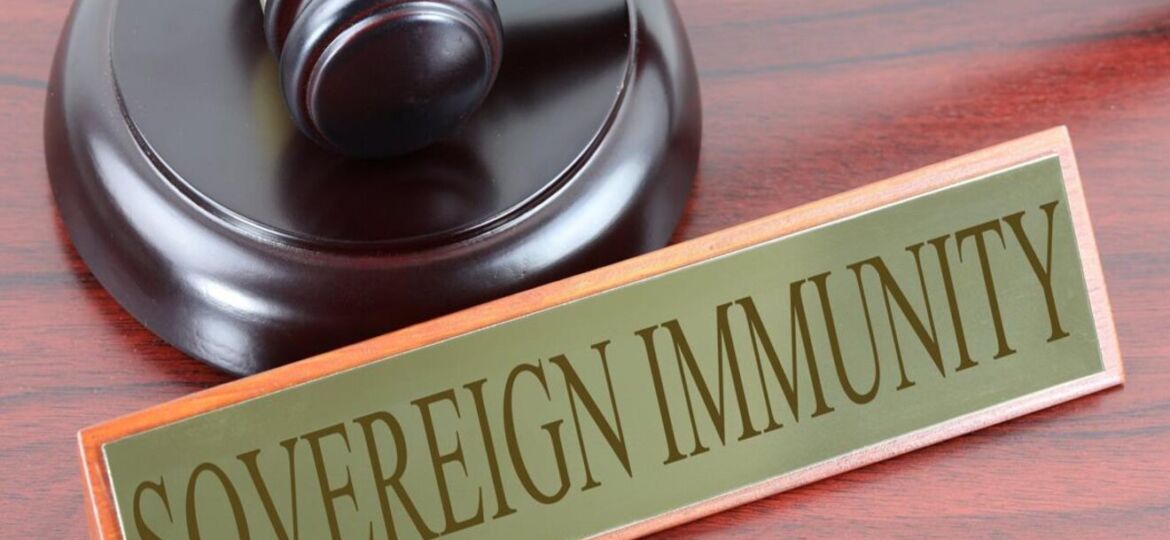
INTRODUCTION
Sovereign immunity is the concept that the State or the Sovereign cannot be held liable for any legal wrong and is immune from criminal prosecutions and civil suits. The English held on to a fundamental and ancient principle that “King can do no harm”, which means that anything which violates the general rule of conduct should not be imputed to the King, and neither will the King be answerable for it to his people.
“He (The King) is not liable to be sued civilly or criminally for a supposed wrong. That which a sovereign does personally, the law presumes will not be wrong; that which the sovereign does by a command to his servants, cannot be wrong in the sovereign because if the command is unlawful, it is law no command, and the servant is responsible for the unlawful act, the same as if there had been no command”(Tobin v The Queen)
This doctrine that the State cannot be held liable for any legal proceedings was brought to India by the British when they ruled over the country and was eventually translated into the legal system post-independence.
WHERE DOES SOVEREIGN IMMUNITY COME FROM?
As the functions of the State increased, it became progressively unreasonable to follow the doctrine of sovereign immunity in England, and the practice of making the state servants liable gained momentum, but soon was abandoned as the damages directly went from the treasury.
In 1947, the Crown Proceedings Act was passed where the Crown was liable for the tort committed by its servants, similar to a private individual according to Section 2 (1) of the Act. The further process of transition of absolute sovereignty to restrictive sovereignty took its time, with the State Immunity Act 1978 playing a major significant role, as it laid down 12 exceptions where the State would be allowed to claim sovereign immunity.
On the contrary to its medieval rulers, there is no Indian counter-part to the Crown Proceedings Act, 1947; instead, Article 300 of the Indian Constitution states the ambit of State liability, that the “Union of India or the State Government can be sued or can sue in the like cases as the Dominion of India and the corresponding Indian States might have sued or been sued”. Before 1947, Section 176 and Sec 32 of the Government of India Act 1935, which were the only close alternative to this provision.
VICARIOUS LIABILITY OF THE STATE IN SOVEREIGN FUNCTIONS
To begin with, one must look at Peninsular and Oriental Steam Navigation Company v. the Secretary State of India, in this case, the Court held that sovereign functions cannot be imputed to the East India Company due to the duality of the Company, and any wrong done by a State servant would be directed back to the Crown. The Court here followed the principle of the “King can do no wrong”, and the State was not held vicariously liable for the sovereign functions.
One of the main pioneers which build the foundation for the concept of the vicarious liability of the State with respect to sovereign functions would be the case of Vidyawati v. Lokumal, where the plaintiff’s husband had been killed after being hit by a negligently driven government jeep. It was held by the Court in this case that not every action of sovereign function, including industry, public transport, and state trading could be accounted for under State liability.
Even though the previous judgement did not specify the basis on which the State liability was to be decided, it was reinstated in the historic case of Kasturi Lal v. State of UP. The facts of the case were that Kasturi Lal, a jeweler, had been taken into custody under the suspicion of possessing stolen property. While he was under police custody, one of the police officers took the gold and silver belonging to Kasturi Lal and ran away to Pakistan. The plaintiff sought to appeal against the state and ask for compensation, State of U.P. was not held liable by the court as the police were just discharging their statutory powers and that it was a sovereign power for the police to keep his gold and silver.
This judgement was the basis for many more judgements to come, and this principle was used for a very long time by the Court to decide the vicarious liability of the state with respect to sovereign functions, but over time the Court has begun implicitly overruling this judgement.
SOVEREIGN IMMUNITY AND FUNDAMENTAL RIGHTS
In the case of Ramjan v. State of Rajasthan, it was held by the Rajasthan High Court that in lieu of constitutional tort one could claim redressal for the unconstitutional deprivation of all fundamental rights, as it was based on the strict liability of the State. The breach of a fundamental right is considered a grave error under the legal system, and hence the appellant can directly choose to file a petition under Article 32 and Article 226 of the Constitution to the Supreme Court and High Court respectively.
It was held that the State had a duty to protect and ensure the Fundamental Rights written and promised by the constitution, and the very essence of Article 32 was to safeguard the other fundamental rights. The cases of People’s Union for Democratic Rights v. State of Bihar, Bhim Singh v. State of J&K, Rudal Shah v. State of Bihar were all pioneering cases that led to the establishment of some-what firm ground to ensure that the State is correctly held liable when any breach of Fundamental Rights takes place under the course of its employment by any state servant.
CONCLUSION
The current provision of sovereign immunity is still uncertain in India. Even though the legal system has made progress and now has a functioning system to determine whether the State can be held liable or not, there has been no codification for the Courts to follow. This provision is based on precedents set in history, and it has proved to be a tricky law to manage as there is not concrete ground to set up damages and compensations on. The Law Commission of India, back in its First Report made some recommendations to pass legislation prescribing State liability, but neither the Commission’s suggestion nor the Supreme Court’s efforts have been able to manifest into a codified law yet.
Author(s) Name: Shivanshika Samaddar (National Law University, Delhi)
Reference(s):
- https://www.legalbites.in/doctrine-of-sovereign-immunity/
- Law of Torts, Dr. R.K. Bangia










